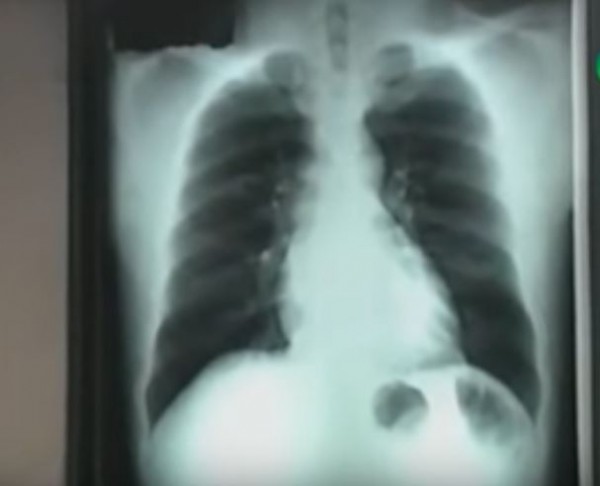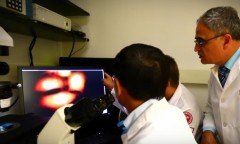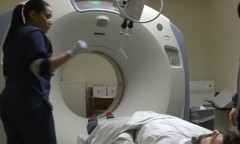By Friedrich Malebranche, | March 30, 2017

A X-ray scan can be used to detect the presence of TB in a patient. (YouTube)
Tuberculosis is considered as the most common cause of death among individuals living with HIV/AIDS. As an overview of such phenomenon, below is some basic information concerning the impact of TB on HIV/AIDS patients.
How TB is Acquired
Mycobacterium tuberculosis is the bacteria that causes TB. It travels mainly through the air when a person coughs or sneezes, but one could also acquire it when he or she shares utensils or by simply having physical contact with someone who has it.
Like Us on Facebook
Although the chance of being infected through a single contact is not that high for a healthy individual, people with HIV/AIDS have a much greater chance of contacting it. When the immune system is weak, TB germs are 10 times more likely to develop into an active TB, especially when the count of their CD4 is below 200, according to WebMD.
Impact of TB on HIV Infection
TB could have an impact on persons with HIV infections, according to HIV InSite. Based on some studies, TB coinfection increases the risk of HIV progression and even death.
Such phenomenon has been highly attributed to the increase in immune system activation and its expression of the CCR5 and CXCR4 coreceptors on CD4 cells. Although not clearly stated by experts, it is believed that activation of latent HIV in macrophages could be highly attributed to high levels of HIV RNA in TB-coinfected individuals.
Impact of HIV Infection on TB
There are many ways through which TB may develop; it could be in a manner of recent acquisition of infection, reactivation of latent infection, or even exogenous reinfection. For an individual with HIV, rapid progression of is but normal for HIV impairs the ability of the host to contain new TB infection.
An HIV-infected person with latent TB is likely more to develop TB disease, up to 20 to 30 percent chances compared to those who are not HIV-infected. HIV-infected patients exposed to TB in a hospital setting could develop active TB within 60-100 days of prolonged exposure.
Proper Diagnosis
Upon having the knowledge of an HIV infection, it is highly suggested that you take a tuberculin skin test (TST) to determine the potential presence or activation of TB disease. Aside from the said test, you may also have a chest X-ray, TB smear test, or sputum culture. It is highly advised to do so as TST diagnosis of TB may be difficult due to HIV infection that may have significantly damaged your immune system.
In conclusion, detecting early signs of TB is one of the keys to fighting the disease. Consulting an expert would likely decrease the risk of complication, especially if you are HIV/ AIDS infected. By doing so, you could reduce the risk of mortality due to tuberculosis.
Watch some common signs and symptoms of TB among HIV patients:
-
Use of Coronavirus Pandemic Drones Raises Privacy Concerns: Drones Spread Fear, Local Officials Say

-
Coronavirus Hampers The Delivery Of Lockheed Martin F-35 Stealth Fighters For 2020

-
Instagram Speeds Up Plans to Add Account Memorialization Feature Due to COVID-19 Deaths

-
NASA: Perseverance Plans to Bring 'Mars Rock' to Earth in 2031

-
600 Dead And 3,000 In The Hospital as Iranians Believed Drinking High-Concentrations of Alcohol Can Cure The Coronavirus

-
600 Dead And 3,000 In The Hospital as Iranians Believed Drinking High-Concentrations of Alcohol Can Cure The Coronavirus

-
COVID-19: Doctors, Nurses Use Virtual Reality to Learn New Skills in Treating Coronavirus Patients











